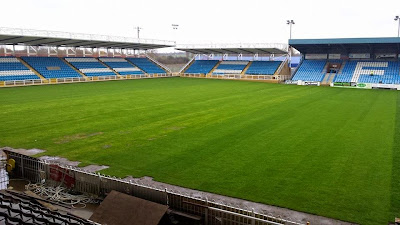Few players have the ability to reach
the highest standards in rugby league in three quite different positions, but
Don Fox was one such player. Well known as one of the best scrum-halves of his
generation, Fox switched later in his career to the back of the pack with great
success, and finished as a very effective front-rower.
 |
| Don Fox |
Of course, it
was in the number seven shirt that Don Fox was best remembered by Featherstone
fans. His famous partnership with Joe Mullaney was a time of unparalleled
success for the club. At various times, Fox had to see off challenges for his
position from the likes of Roy Bell, Tommy Smales and Alan Marchant, all very
good players. But from 1953 to his benefit year in 1963 Don reigned supreme at
scrum-half.The
following season however, Fox’s career entered a new phase. With another bright
young half-back called Carl Dooler battling for a first team spot, Rovers’ new
coach Johnny Malpass came up with the perfect solution. Dooler started at
seven, and Don’s talents were to be employed among the forwards. So, for the
first time in his career, on the 17th of September 1963 Fox switched
to the pack and turned out at loose forward. Rovers enjoyed a good win against
Leeds in the Yorkshire Cup that afternoon, and the new line up was cemented. With
much of the organisation of the side now falling on Dooler’s shoulders, Fox
revelled in his new role.
Up to this
point, Fox’s outstanding talent had not been fairly reflected in the
representative honours he had won. He had been capped three times by Yorkshire,
and played twice for Great Britain in unofficial tests against France, and
toured with Great Britain in 1962 without playing a test. Otherwise he had been
largely overlooked throughout his career as a scrum-half.
Ironically,
within two months of his switch to loose forward his representative luck
changed. In November 1963 Fox finally made his official Great Britain debut
against Australia, in the third Test of a series that Britain had already lost.
Don was chosen at thirteen, with the scrum-half slot going to Tommy Smales, who
had done well for himself after having been unable to shift Don from the Rovers
first team years earlier. Smales and Fox inspired Britain to victory in a
brutal game that day, but it was to be Don's one and only test cap.
After two
more good years at loose forward for Featherstone, vying for a place with the
fit again Terry Clawson and other promising newcomer Arnie Morgan, Don called
time on his Rovers career.When he
signed for Wakefield in 1965, Don was Featherstone’s leading try, goal and
points scorer. He played just 48 of his 368 games at loose forward, but
certainly made an impact in that role. Over fifty years later his Rovers try
scoring record of 162 still stands today. In 1968 Don Fox won the Lance Todd
trophy in the infamous ‘Watersplash’ Challenge Cup final of 1968. By then he was no longer a brilliant scrum
half, nor a wily loose forward, but had converted himself into a top class prop.





